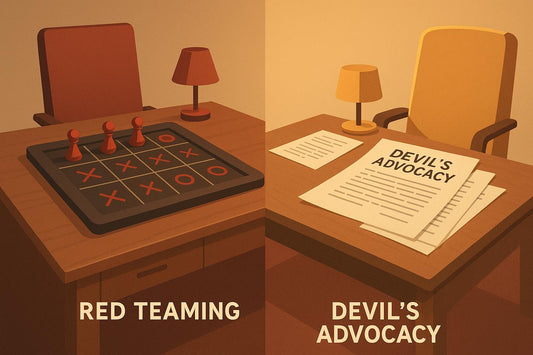Better Thinking

Mental Models for Iterative Learning Success
Iterative learning works through cycles of trial, feedback, and improvement. It thrives on small, continuous adjustments rather than one-time mastery. Mental models - cognitive tools to simplify complex problems -...
Mental Models for Iterative Learning Success
Iterative learning works through cycles of trial, feedback, and improvement. It thrives on small, continuous adjustments rather than one-time mastery. Mental models - cognitive tools to simplify complex problems -...

What Is Fundamental Attribution Error?
The Fundamental Attribution Error (FAE) is a common psychological bias where we overemphasize someone’s personality traits and overlook external factors when judging their actions. For example, if someone is late,...
What Is Fundamental Attribution Error?
The Fundamental Attribution Error (FAE) is a common psychological bias where we overemphasize someone’s personality traits and overlook external factors when judging their actions. For example, if someone is late,...

How Analogies Improve Problem-Solving
Analogies make tough problems easier by connecting what you know with what you're trying to solve. This method, called analogical reasoning, helps you identify patterns, simplify complex ideas, and generate...
How Analogies Improve Problem-Solving
Analogies make tough problems easier by connecting what you know with what you're trying to solve. This method, called analogical reasoning, helps you identify patterns, simplify complex ideas, and generate...

Habit Loops vs. Marginal Gains in Fitness
When it comes to building a fitness routine, two strategies stand out: habit loops and marginal gains. Habit loops automate behavior through a simple cycle - cue, routine, and reward...
Habit Loops vs. Marginal Gains in Fitness
When it comes to building a fitness routine, two strategies stand out: habit loops and marginal gains. Habit loops automate behavior through a simple cycle - cue, routine, and reward...

Red Teaming vs. Devil's Advocacy: Ethical Diffe...
When testing ideas or defenses, organizations often use red teaming or devil's advocacy. Both challenge assumptions but differ in methods and ethical concerns: Red Teaming: Simulates attacks (e.g., cybersecurity, social...
Red Teaming vs. Devil's Advocacy: Ethical Diffe...
When testing ideas or defenses, organizations often use red teaming or devil's advocacy. Both challenge assumptions but differ in methods and ethical concerns: Red Teaming: Simulates attacks (e.g., cybersecurity, social...

Shared Mental Models and Groupthink Bias
Shared mental models help teams work efficiently by aligning their understanding of goals, processes, and roles. However, these shared frameworks can sometimes lead to groupthink - a situation where the...
Shared Mental Models and Groupthink Bias
Shared mental models help teams work efficiently by aligning their understanding of goals, processes, and roles. However, these shared frameworks can sometimes lead to groupthink - a situation where the...

My Store
Frameworks and Mental Models - Flash Cards (PRE-ORDER)

